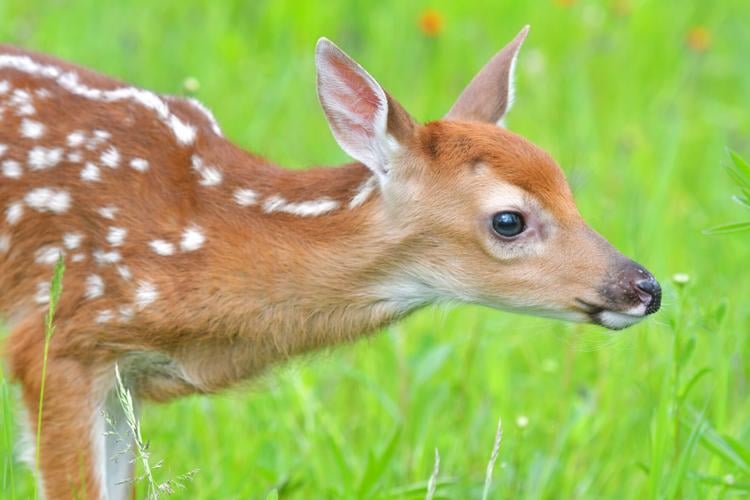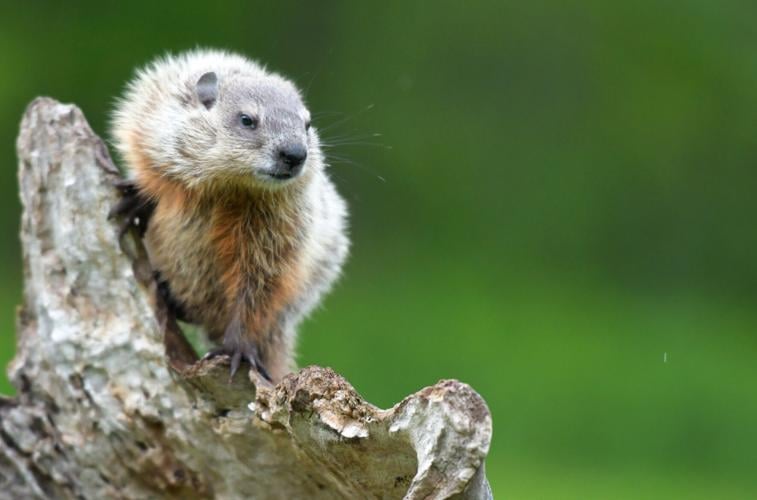As a wildlife photographer, this time of year can present challenges to attaining great animal imagery.
One of my favorite subjects, waterfowl, become secretive after their young hatch, often hiding out deeper in cattail or heavy shoreline cover to avoid detection. Since survival of their offspring is paramount, it’s no wonder they seek out areas that repel both predators and photographers.
Only a few weeks previous, these same ducks threw caution to the wind, drakes displaying vivid mating colors for hens and battling rival drakes for mating rights. Their early spring, brazen habits made them far easier to capture on high speed photo gear.
Now, as ducks care for young, they’ll enter the summer period beginning to molt feathers, an action that temporarily bars them from flight and drives them even deeper into cover. During molt, even the most colorful drakes turn dull and won’t begin to exhibit their signature bright hues until early fall.
Without the ability to spring into air, diving and hiding become their only weapons against predators who are looking for meals to feed their own youngsters.
Luckily, there are enough ducks, primarily mallards, and geese nesting in proximity to urban areas that their newly hatched young can be observed and recorded with just a little scouting effort.
Mankato-area幼鹅似乎免除hiding out after hatching. It seems their attending adults become even more bold, often charging and honking at predators and people alike who dare get too close their young.
One mammal that is common to our area isn’t often observed. Living most of their lives below ground or in structures like hollow logs, woodchucks are generally only seen when they venture into clover-laden grass to feed.
Interestingly, the little critters are extremely spooky, bolting down a burrow at the faintest sign of danger.
Just like the above mentioned critters, woodchucks fervently guard their young, hustling them away to safety long before a threat can get close.
When I was a youthful bowhunter, I spent many hours stalking woodchucks. The game was akin to sneaking across a featureless plain after mule deer. I soon learned that while the sharp-toothed animals are always on the lookout for danger, their eyesight wasn’t nearly has honed.
I quickly discovered that chucks’ will rise up after brief seconds of browsing to scan for threats. The only way to get within range of one was to take a step, then freeze while the animal looked about.
Once feeding commenced, another step or two could be taken. Gaining ground was time consuming, sometimes it taking an hour or more to get within archery range. Once there, the chance of missing the diminutive critter hovered at 50%.
It was great stalking practice, honing skills that have helped me sneak up on myriad big game animals.
These days, my woodchuck hunting days are with cameras and are a result of stumbling upon one while focusing on another subject. The last woodchuck I found was a weeks-old youngster living and cavorting near a rotted log den site.
I grabbed a few shots of the wary woodchuck before he disappeared into the den.
While many young animals fall squarely into the adorable category, few can match the attractiveness of a whitetail deer fawn. Sporting brilliant red coats, flecked with white, and extra-large eyes, anyone who sees one will watch until the Bambi-like animal melts into the woods.
No matter what animal I’m after, if there’s an opportunity to photograph a deer fawn, I’ll forego all else to make those pictures.
Deer numbers seem above average this year, so fawn images should be a bit easier to accomplish.
This is peak time for does dropping fawns. Folks who frequently drive roads through heavy deer areas should be vigilant for does leading fawns.
这不仅可以帮助避免碰撞,但可能create opportunities to view the tiny deer.
Many of my top fawn shots resulted from shooting the camera system right out the truck window. Sometimes, a vehicle can make an efficient blind.
These animals may be common, less heralded than others, but in spring, offspring in tow, they can provide hours of wildlife viewing enjoyment.
Mark Morrison is an avid hunter and fisherman who has been a freelance outdoors writer and photographer for more than 20 years. The Mankato resident since 1979 may be contacted atmercuryphotog@aol.com.
































Commented
Sorry, there are no recent results for popular commented articles.